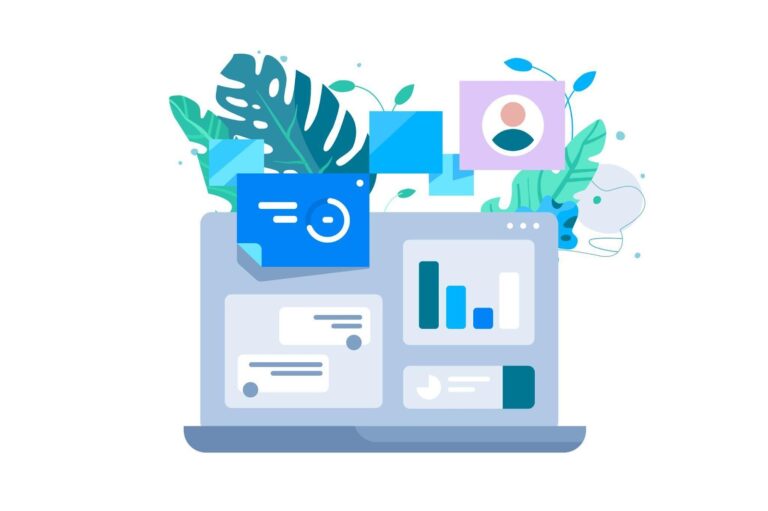Infographics are now widely used to convey information in a more appealing and easily understandable manner. But what is an infographic and how can it help in solving typical design issues? In this article I will define what infographics are, what advantages they have, and how to create them.
Understand infographics
What is an infographic? In other words, an infographic is a graphic or a picture that illustrates information or data. It uses pictures, graphs and words to relay information in a fast and efficient way. Infographics are applied in different fields including education, marketing and other fields to make information more understandable and attractive.
Benefits of using infographics
Infographics offer several benefits:
- Easy to understand: Infographics help to break down the information into easily digestible pieces which the audience can easily understand.
- Engaging: Visuals grab the attention more than the text, so the content is more interesting to the readers.
- Shareable: The information contained in infographics is usually spread on social networks, so the audience is expanded.
- Memorable: Visual information is easier to remember than text, and thus, infographics are useful for educating the audience and marketing.
Solving common design problems with infographics
Infographics can help solve several common design problems:
Problem 1: Overloading with text
A typical mistake that designers make is overloading a page with text. This can confuse the reader and make the information hard to follow since it is a lot of information at once. Infographics help to solve this problem by dividing the information into bits that can easily be processed through the eyes. For instance, instead of writing a big block of text to describe statistics, an infographic can use graphs and symbols to represent the data adequately.
Problem 2: Lack of engagement
It is important to grab the attention of the audience especially in the current society where people have short attention spans. What is the purpose of an infographic in this case?
Infographics incorporate the use of bright colours, exciting shapes, and attractive graphics to attract and sustain the audience’s attention. A good example of an infographic is one that will maintain the attention of the viewer and compel him/her to pass on the information.
Problem 3: Complexity of information
When it comes to presenting complex information, it can be rather difficult to do so. Infographics are particularly useful in presenting complex information and ideas.
For example, an annual report of a company can be summarised in a form of an infographic that shows the financial statistics and accomplishments of the company in a simple manner. This makes it easier for the stakeholders to comprehend and value the information.
Creating effective infographics
Creating an effective infographic requires careful planning and design. Here are some tips:
- Define your purpose: Before you begin the process of designing your infographic, it is important to establish the main goal of the project. What is the message you wish to pass across? Who is your audience? This understanding of the goal will help in the process of designing.
- Gather data: Gather all the information and data that is required. Make sure that the data is correct and has a relation to the message that you want to convey. Accuracy of the data used in the infographic is very important when it comes to the believability of the content.
- Choose a layout: Choose a layout that would be most appropriate for the information you have. Examples of layouts are timeline, flowchart, and comparison charts. The arrangement should help in the comprehension of the content.
- Use visual elements: Use icons, charts, and images into the text. All of these elements should be harmonious with the information and not overshadow it. It is advisable to use colours to emphasise certain points that are being made.
- Keep it simple: Do not overload the infographic with information as this will make it look cluttered. Make the design simple and uncluttered. Always keep in mind that the intention is to make information clear and easy to understand, not to confuse the viewer.
Connecting to current events
Infographics are especially applicable when it comes to the coverage of the events happening in the present. For instance, during the COVID-19 outbreak, people employed infographics to convey information about protective measures, vaccination rates, and travel restrictions. They offered a direct and simple means of passing information to the public within the shortest time possible.
Examples of effective infographics
Here are some examples of how infographics can be used effectively:
Health education: A picture of a balanced diet and exercise can be more attractive to the readers than a long article about the same topic. Illustrations of food groups, portions and exercising regimes can assist people in the understanding of and their compliance with healthy lifestyles.
Business reports: Annual reports are one of the most common places where infographics can be found, as they help to show the major milestones, financial results, and the company’s plans for the future. This makes the report more appealing and useful to the stakeholders.
Social media campaigns: Social media marketing is one of the most commonly used techniques that involve the use of infographics. They can be used to pass brand messages, promotions, and customer reviews in a creative manner that would encourage more sharing.
Conclusion
In conclusion, what is the worth of an infographic in solving design issues? Infographics are one of the most effective ways of making information more understandable, interesting and easy to recall.
Thus, by solving the typical issues in design, including text overload, lack of engagement, complexity of the information, and its poor organisation, infographics can improve the communication process and the level of understanding.
In any case, whether for educational purposes, advertising, or reporting, the use of infographics in the content will be highly useful for the audience and effective for achieving the set objectives.
Keep an eye for more news & updates on Toonily.Co.Uk !
